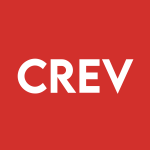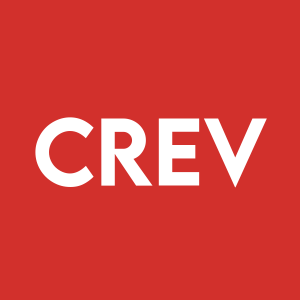Welcome to our dedicated page for Carbon Revolution Public Company SEC filings (Ticker: CREV), a comprehensive resource for investors and traders seeking official regulatory documents including 10-K annual reports, 10-Q quarterly earnings, 8-K material events, and insider trading forms.
Carbon Revolution PLC’s composite manufacturing disclosures run deep—capacity expansions, Diamond Weave Technology patents, and multi-year OEM supply agreements are scattered across hundreds of pages. If you have ever wondered, “Carbon Revolution PLC SEC filings explained simply,” this page is your starting point. Stock Titan’s AI pinpoints where the company breaks down tooling capex, warranty provisions, and wheel shipment volumes, saving you from wading through dense engineering jargon.
Need immediate visibility into “Carbon Revolution PLC insider trading Form 4 transactions”? Our real-time feed captures every “Carbon Revolution PLC Form 4 insider transactions real-time” notice as soon as it hits EDGAR, highlighting executive stock moves around new program launches. For broader performance trends, the platform links each “Carbon Revolution PLC quarterly earnings report 10-Q filing” to AI-generated margin and cash-burn graphs, while the “Carbon Revolution PLC annual report 10-K simplified” view extracts segment revenue tied to specific OEM customers. Material updates come alive through “Carbon Revolution PLC 8-K material events explained,” so you never miss factory ramp announcements or supply-chain risks.
Investors tracking governance can explore the “Carbon Revolution PLC proxy statement executive compensation” section to see how incentive plans align with production milestones. If you’re researching liquidity before the next capital raise, our “Carbon Revolution PLC earnings report filing analysis” surfaces operating cash flow swings. Prefer conversational guidance? Try “understanding Carbon Revolution PLC SEC documents with AI” to get plain-English answers. From insider alerts to comparative quarter-over-quarter wheel volume charts, every filing type you rely on is contextualized, searchable, and delivered the moment it is filed.
Carbon Revolution Public Ltd Co (CREV)
After this transaction, Vovra beneficially owned 57,217.04 shares of Carbon Revolution common stock, held in direct ownership. The filing reflects a change in holdings by a director who is also identified as a 10% owner of the company.
Carbon Revolution (CREV) reported a Nasdaq delisting determination after Nasdaq found the company out of compliance with Listing Rule 5550(b), which requires minimum shareholders’ equity of $2.5 million. Nasdaq plans to suspend trading at the open on November 17, 2025, and file a Form 25-NSE, unless the company appeals by November 13, 2025.
The company also remains non-compliant with Listing Rule 5250(c)(1) because it has not filed its Annual Report on Form 20-F for the period ended June 30, 2025, citing uncertainty about its ability to operate as a going concern. Carbon Revolution intends to request a hearing, which would stay the suspension until at least November 28, 2025, and present a plan based on strategic and financing options. The company cautions there is no assurance of a stay, extension, or continued listing, and a delisting could severely limit trading liquidity and price.
Carbon Revolution (CREV) furnished unaudited interim results and a business update via Form 6-K. The statements were prepared on a going concern basis without an assessment of appropriateness, are unaudited, and exclude notes and MD&A; an assessment is anticipated as part of the audit for the fiscal year ended June 30, 2025.
The company reported continued softness in demand, particularly for EV-related programs, and disclosed the early cancellation of two programs by a customer. It revised revenue forecasts downward and slowed near-term expansion. Comparative figures for December 31, 2023 were restated to include an additional $1.15 million depreciation affecting cost of goods sold.
Carbon Revolution remains out of compliance with certain Nasdaq listing requirements and has submitted a plan; any exception to regain compliance may extend only until November 26, 2025. The company announced US$5 million of OIC funding and expects a further US$2 million, but it may need additional short-term funding and is exploring strategic and financing alternatives, with no assurance of completion.
Carbon Revolution Public Limited Company amended its agreement with Orion Infrastructure Capital to fund US$5 million through new Series 2025-A2 Notes, with a potential additional US$2 million subject to OIC’s written consent. The company also issued new warrants equal to 5% of fully diluted ordinary shares for this tranche, with an additional 2% tied to the optional tranche.
The new Series 2025-A2 Notes come under a Fifth Supplemental Indenture that extends the Cash Interests Suspension Period through June 30, 2026 and suspends amortization until January 2027. If the optional tranche occurs, OIC’s total warrants would represent approximately 68% of fully diluted shares, up from 61% previously.
After fees and expenses, unrestricted cash was about US$8.8 million and restricted cash was about US$2.4 million as of October 31, 2025. The company reports weaker demand, early cancellation of two EV-related programs by a customer, and ongoing Nasdaq continued listing non-compliance. It expects it may need additional near-term funding and is exploring strategic and financing alternatives within the fiscal year ending June 30, 2026.
Carbon Revolution Public Ltd Co Schedule 13G filed by Niraj Kumar Vovra reports beneficial ownership of 340,754 ordinary shares, representing 18.07% of the class. Mr. Vovra asserts sole voting power for all 340,754 shares while reporting no sole or shared dispositive power to dispose of the shares. The filing states the holdings were acquired and are held in the ordinary course of business and not for the purpose of changing or influencing control of the issuer. No group affiliations, subsidiaries, or holdings on behalf of others are reported.
Daniel J. Hennessy filed an amended Schedule 13G reporting that he beneficially owns 0 ordinary shares of Carbon Revolution Public Ltd Co (CUSIP G1893D102). As of June 30, 2025 the filing states he holds 0% of the outstanding class and has no sole or shared voting or dispositive power over any shares. The filing clarifies that the securities were not acquired to influence control of the issuer and that no group relationships, subsidiaries, or 5%-or-greater holdings are reported.


